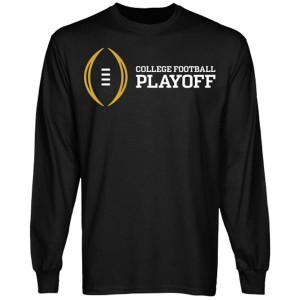College Football Playoff – Prestige or PR Nightmare?
What are They Doing? College Football Fans Need to Know
For the first time the national championship game in college football will be decided by a college football playoff consisting of the top four teams and decided solely on the votes from the new thirteen-member committee. The College Football Playoff Selection Committee that will rank the top twenty-five NCAA teams and determine the four teams to play in the College Football Playoff and six other bowl games.
What this committee does and more importantly the results matters to millions of football fans, players, students, coaches and NCAA member institutions. To that end full disclosure will be critical to the image of the committee.
The integrity of the committee members is not in question. The inaugural group appears to be a who’s who in college football and outstanding members of society.
What they need to realize is that this is a major shift for fans to accept from the last sixteen years, the BCS era, to a new college football playoff system. College football fans are now 100% dependent on the accuracy of a human committee with years of football knowledge and experience. As you know, with experience comes bias.
The more the committee shares with the public in the spirit of transparency, the more the public will trust the results.
Jeff Long used the terms “maximum disclosure” and “transparent” when describing what information will be made available to the public in an interview with ESPN’s Paul Finebaum. He said that how they determine what exactly that means is yet to be decided.
The College Football Playoff Committee met for the first time in Dallas, Jan 21-22, and there wasn’t much reported about what they accomplished. That could be because not much has been decided. There should be much more information coming out of their next meeting, which is April 2 – 3. There is much to do in a short amount of time.
In a previous article we list the most critical factors for the committee to decide, which are, Ranking Criteria, Scrutiny Process, Voting Process, Transparency, and Mock Ranking.
This inaugural committee is tasked with not just grading and ranking teams, but creating a complex series of processes for accomplishing the most accurate ranking in college football for the first time. The processes they craft now will be the foundation for many years to come. That makes it all the more critical that they get it right and let the viewing public know what it is.
Top Six Things Fans Want to Know about the College Football Playoff
1. The specific schools from which each member is recused
2. The parts of the discussion/process their recusal covers
3. The Blueprint: The exact steps being taken in each process
4. All dates and places of meetings, scheduled and otherwise
5. All votes per member (which they have indicated they may not do.)
6. Mock trials and the results
Jeff Long said that they intend to conduct practice sessions in the fall. He fell short of agreeing to publicize the results of the mock ranking.
Long also said that recusal is one of the more complex issues the committee faces. We explain this in great depth in a follow-up story to be released this week. Come back, you’ll want to read it. You may want to subscribe to the blog to make sure you don’t miss it.
The Executive Director, Bill Hancock, must see a public relations firestorm coming. Just this week they launched a fledgling public relations effort on their web site, through merchandizing and social media, Facebook, Twitter and Pinterest.
On March 13, Hancock announced the hiring of Shawn Moore, named Director of Community Relations and Lauren Lanier hired for communications coordinator.
Here a photo of Moore from the CFB Playoff Website.
Here’s what the new College Football Playoff apparel looks like.
Here’s what their Pinterest Account Looks like.
Hancock described the selection committee as “one of the hardest jobs in sports.”
From the beautiful words of composer, Burt Bacharach, “Make It Easy on Yourself.”
Making this as transparent to the public as possible will make it easier for the committee members and new PR team. Tell it all, brother:
This is the second story in a three-part series. The next story goes in great depth regarding the complexity of recusal and the importance of the awareness of various human biases, which all affect the committee members’ votes. You’re invited to subscribe to the blog to get the latest stories delivered to your e-mail. You may also follow us on Twitter @heaubieshebama and check out our Pinterest boards with over 2,000 pictures all featuring the sport we love.











